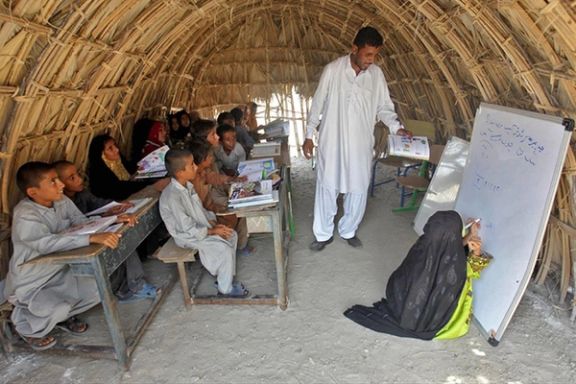In a Thursday article in the reformist-leaning Etemad newspaper, Abdi pointed out that nearly one million students have dropped out of school, many are officially enrolled but do not attend classes or take exams, and average grade scores are alarmingly low.
He argued that comparing university entrance exam results across different regions and schools in the country revealed a significant educational disparity affecting the system.
In August, the head of the Education Ministry's Evaluation Center reported that the average grade for final-year high school students had dropped to 10.89 on a 20-point scale. In Iran's grading system, a score of 10 is considered the minimum passing grade, meaning many students are barely meeting academic requirements.
Abdi also claimed that that the poor quality of public education primarily affects ordinary citizens, while the children of high-ranking state officials benefit from costly private schooling, often in institutions that offer instruction in foreign languages.
President Masoud Pezeshkian has repeatedly addressed the concerning educational disparity and the deterioration of the educational system, emphasizing that 'educational justice' is a fundamental pillar of his proclaimed reform agenda.
“It is not acceptable for the child of someone who doesn’t have money and connections to study in a school where he may not get a good education … All schools must meet a satisfactory standard. It is unacceptable that all who get to go to university come from families whose children can study in special and private schools,” he said in a speech in September.
Barriers to education in Iran's rural and underserved regions
Iran's educational system is confronted with numerous challenges, including a shortage of schools, overcrowded classrooms, and a lack of trained teachers, particularly in rural and underserved regions like the southeastern province of Sistan and Baluchestan.
In this province, tens of thousands of children do not attend school due to poverty and inadequate rural transportation facilities. Additionally, thousands more are denied access to education simply because they lack birth certificates or other identity documents.
In some impoverished areas, contributing to the failure of girls to attend school.
In 1981, two years after the Islamic Revolution, the newly established Islamic Republic lowered the minimum marriage age from 18 for girls and 20 for boys. Current laws now permit girls to marry at 13 and boys at 15, with provisions that allow for the marriage of even younger children.
According to official figures over 27,000 girls under the age of 15 had been married across the country during a nine-month period from 2021 to 2022. Additionally, nearly 70,000 girls between the ages of 10 and 19 gave birth within the span of just twelve months.
University admission quotas as a barrier to quality education
Another serious issue affecting the quality of education, Abdi said, is the university admission quotas.
These quotas benefit the family members of martyrs and veterans of the Iran-Iraq War (1980-1988), as well as military and police personnel killed in service and other government employees. The largest quotas, however, are allocated to students from deprived areas.
According to Abdi, around 75 percent of those admitted to medical schools are accepted solely because they benefit from these quotas.
These quotas allow students with lower academic achievements to gain admission to the most prestigious universities. Many believe this has significantly reduced the overall quality of higher education.
In recent years, the education ministry has hired thousands of clerics and seminary students to replace trained teachers. Critics argue that this could further compromise the quality of education for the younger generation in Iran.








